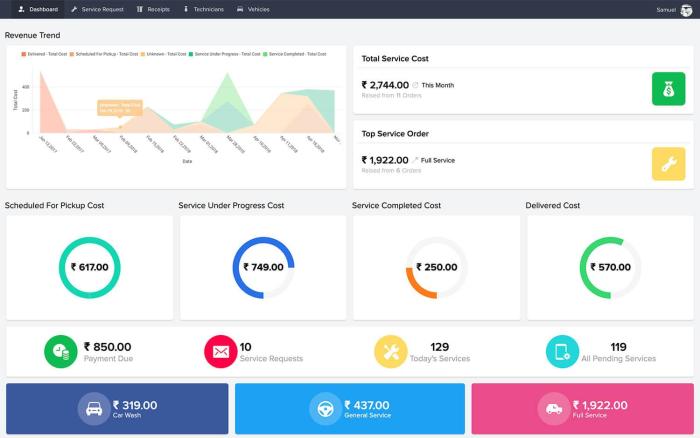Business operations management software is essential for optimizing efficiency and productivity within organizations. This software serves as a powerful tool that enables businesses to streamline processes, enhance collaboration, and make data-driven decisions. Its importance cannot be overstated as it empowers companies to adapt to an ever-changing market landscape while maintaining operational excellence.
By integrating technology into core business functions, organizations can leverage key features such as real-time reporting, task automation, and seamless communication. These elements not only improve workflow but also foster a culture of innovation and responsiveness, ultimately contributing to long-term success.
Overview of Business Operations Management Software
Business operations management software is a vital tool for organizations seeking to streamline their processes, enhance productivity, and improve overall efficiency. By integrating various operational functions, these software solutions enable businesses to manage their resources, track performance metrics, and make data-driven decisions. The importance of this software lies in its ability to provide insights that lead to better strategic planning and operational execution.
The key features that define successful business operations management software include project management capabilities, collaboration tools, resource allocation, and real-time reporting. Additionally, technology plays a crucial role in enhancing business operations management by automating mundane tasks, allowing teams to focus on higher-value activities and fostering better communication across departments.
Types of Business Operations Management Software

There are several types of business operations management software that cater to different aspects of organizational needs. These can be categorized into various groups based on their primary functions and industries served.
| Software Type | Primary Functions | Industries Served |
|---|---|---|
| Project Management Software | Task assignment, progress tracking, and collaboration | Construction, IT, Marketing |
| Customer Relationship Management (CRM) | Client interaction tracking, sales management | Sales, Services, Marketing |
| Enterprise Resource Planning (ERP) | Integrated management of core business processes | Manufacturing, Retail, Services |
| Supply Chain Management Software | Inventory management, logistics planning | Retail, Manufacturing, Logistics |
Each type of software serves specific industries and operational needs, ensuring that organizations can optimize their performance with tailored solutions.
Benefits of Implementing Business Operations Management Software

Implementing business operations management software offers numerous advantages for organizations. These benefits can be categorized into quantitative and qualitative results, enhancing both the efficiency and effectiveness of operations.
- Improved efficiency in workflows and processes.
- Increased visibility into project status and performance metrics.
- Better resource management leading to cost savings.
- Enhanced collaboration among teams and departments.
- Data-driven decision-making based on real-time analytics.
Case studies illustrate these benefits effectively; for instance, a manufacturing company implementing an ERP system reported a 30% reduction in operational costs within the first year due to streamlined processes and better inventory management.
Key Features to Look For, Business operations management software
When selecting business operations management software, organizations should consider several essential features that contribute to optimizing their operations.
- Real-time reporting to track key performance indicators.
- Integration capabilities with existing systems for seamless data flow.
- User-friendly interface for easy adoption by employees.
- Automated workflow processes to minimize manual tasks.
- Customizable dashboards to visualize data effectively.
Each of these features plays a critical role in enhancing operational efficiency, ultimately leading to improved business outcomes.
Implementation Process
The implementation process of business operations management software involves several structured steps to ensure successful adoption within an organization.
1. Planning: Define goals and select the appropriate software.
2. Configuration: Customize the software to fit organizational needs.
3. Data Migration: Transfer existing data into the new system.
4. Training: Educate employees on how to use the software effectively.
5. Execution: Go live with the new system and monitor for issues.
A typical implementation timeline can span from a few weeks to several months, depending on the complexity of the software and the size of the organization. Common challenges during implementation include resistance to change and data integration issues, which can often be mitigated through comprehensive training and support.
Best Practices for Usage
To maximize the effectiveness of business operations management software, organizations should adopt several best practices.
- Regularly train employees to keep them updated on new features.
- Encourage feedback from users to identify areas for improvement.
- Set clear expectations and goals for software usage.
- Monitor key performance indicators to measure success.
- Continuously evaluate workflows and make necessary adjustments.
Ongoing evaluation is crucial to ensure that the software remains aligned with business objectives and can adapt to changing needs.
Future Trends and Innovations

Emerging trends in business operations management software indicate a shift towards more integrated and intelligent systems. Innovations such as artificial intelligence, machine learning, and advanced analytics are expected to revolutionize operational management.
For example, predictive analytics could allow organizations to forecast demand more accurately, facilitating better resource allocation. Current software solutions are poised for advancements that will enhance usability, functionality, and integration capabilities, setting the stage for a more efficient future in business operations management.
Final Summary
In conclusion, the implementation of business operations management software paves the way for significant improvements across various organizational facets. By understanding its benefits, key features, and best practices, businesses can effectively harness this technology to drive growth and efficiency. As the landscape continues to evolve, staying informed about emerging trends will ensure that companies remain competitive and poised for success in the future.